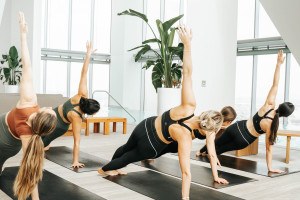I Have “Computer Neck,” And You Probably Do Too. Here’s What You Can Do About It.
A trip to Zarett Rehab & Fitness introduced me "computer neck," the small postural issues that could become big issues down the road.

Photograph by iStock/seb_ra
I’m not the best at identifying my own pain. In fact, I’m pretty great at ignoring it; in high school, I played through the end of one soccer season with both of my ankles sprained (what were my parents thinking?). So when I walked into Zarett Rehab & Fitness a few weeks ago, hoping to learn more about what exactly it is they do for athletes with injuries, I wasn’t looking for a diagnosis. I — I’m very fortunate to say — felt fine.
It only took Joe Zarett, a physical therapist and the founder of Zarett Rehab & Fitness a few seconds of looking at me to let me know I had a classic case of “computer neck.” As a writer, I spend a lot of time hunched over a computer, and it had thrown my posture out of whack. My shoulders were hiked up by my ears, my chin jutted forward, and the curves that are supposed to be at the top and base of my spine had slumped into one long line.
When he told me this, my first response was, Okay, but so what? Then Zarett painted a picture for me: Here I am, in my mid-20s, already hunching over. In a few years, maybe I’d start slumping a little more. Then some more, till I’ve got a Hunchback of Notre Dame situation going on. Eventually, I’d need a cane. Then I’d be walking with a cane, eyes down on my feet. Then — oops! — a fall. Now a broken hip.
Of course, Zarett is happy to admit that sharing the long-term effects of bad posture is a dramatic scare tactic. But the fact is, while he has always seen postural and back issues in older people, he’s recently started seeing it in much younger clients. He blames it on our excessive use of technology — office workers like me who spend all day at a desk, then go home, sit on our couches, and hover over our phones. And even though I am active and take spin classes, hunching over an indoor cycling bike isn’t any better for my back than hunching over a computer.
Thus, Zarett explained that while we may not all end up with canes and broken hips, “computer neck” can cause lots of other problems: tightness across the chest muscles, neck pain, and even lower back pain — the kind of lower back pain I’ve been carefully ignoring for months.
Once I acknowledged the problem, my next thought was, Okay, well then I’ll just stand up straighter! But according to Zarett, it’s not quite that easy. Because I haven’t developed the muscles to hold myself straight, as soon as I stop focusing on standing tall, I’m right back in my hunched position.
“As soon as you stop thinking about it the muscles let go and you droop forward again, and that’s the perfect illustration of the fact that the muscles along the spin and shoulder blades are not developed,” says Zarett.
That’s why at Zarett Rehab & Fitness, they pair their diagnosis with exercise programming to help balance out the body — strengthening the weak muscles that oppose the ones pulling you forward. For people with computer neck — which, if you’re an office worker or spend a lot of time sitting, that might include you — there’s a need to strengthen the muscles around the spine and shoulder blades.
Lucky for us, Zarett was willing to share some of the exercises and stretches he prescribes to people with computer neck. Having done some of these myself, I can confirm that while they look simple enough, I still felt the burn, simply because they targeted some of my least-utilized muscles in a whole new way.
90-90 External Rotation
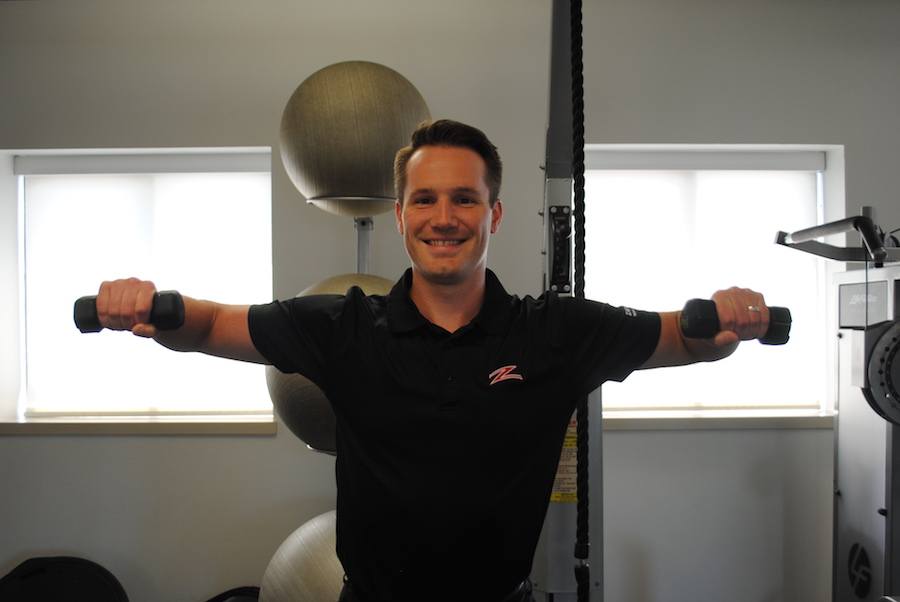
Photograph courtesy Zarett Rehab.
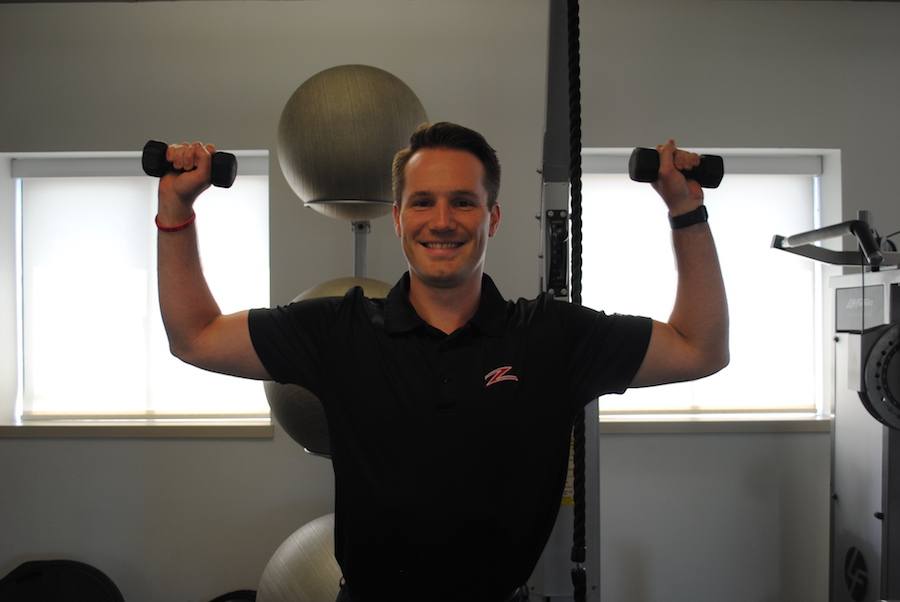
Photograph courtesy Zarett Rehab.
Grab a couple of light weights, and hold your arm, bent at 90-degrees, straight in front of you. Rotate your arm up, to make a goal post with your fists.
No Moneys (a.k.a. Theraband Bilateral External Rotation)
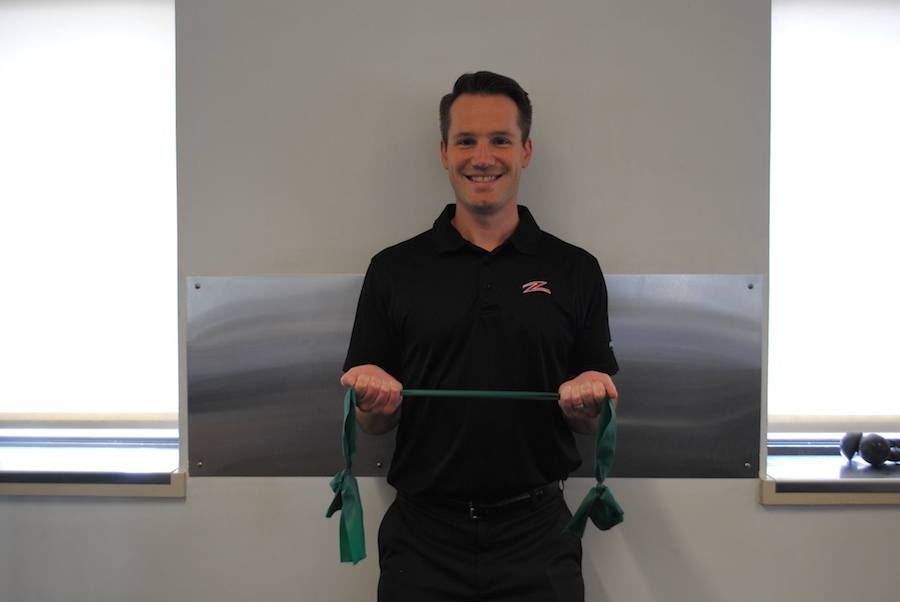
Photograph courtesy Zarett Rehab.
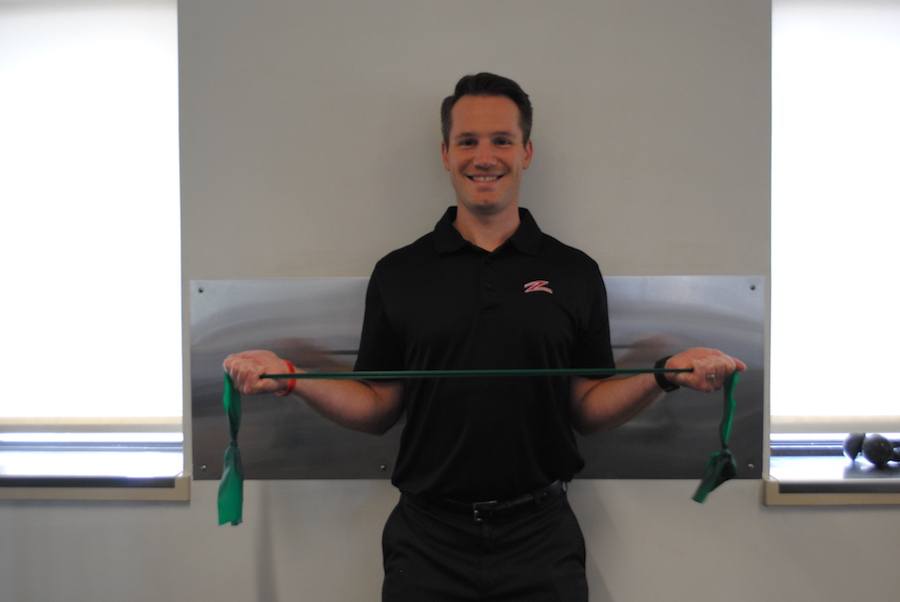
Photograph courtesy Zarett Rehab.
Keep your elbows glued to your sides as you grip the ends of a resistance band. Pull the two ends apart as you rotate your arms out. Then slowly bring hands back together as you return to start.
Theraband Rows

Photograph courtesy Zarett Rehab.
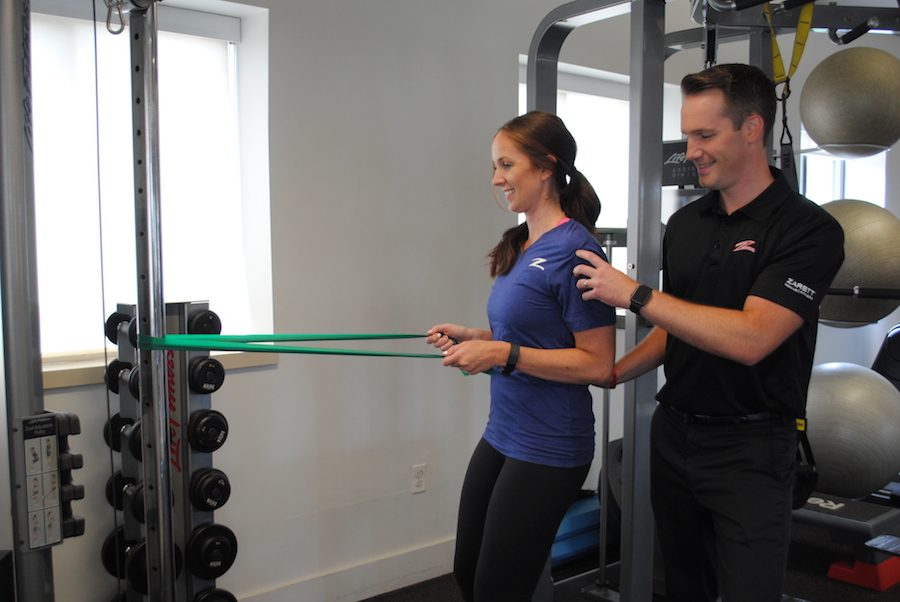
Photograph courtesy Zarett Rehab.
Wrap a resistance band around an anchor, holding both ends with your arms straight. Pinch your shoulder blades together as you draw the band back towards you, until you have a 90-degree bend in your arms. Return to start.
Pull Aparts (a.k.a. Theraband Bilateral Horizontal Abduction)
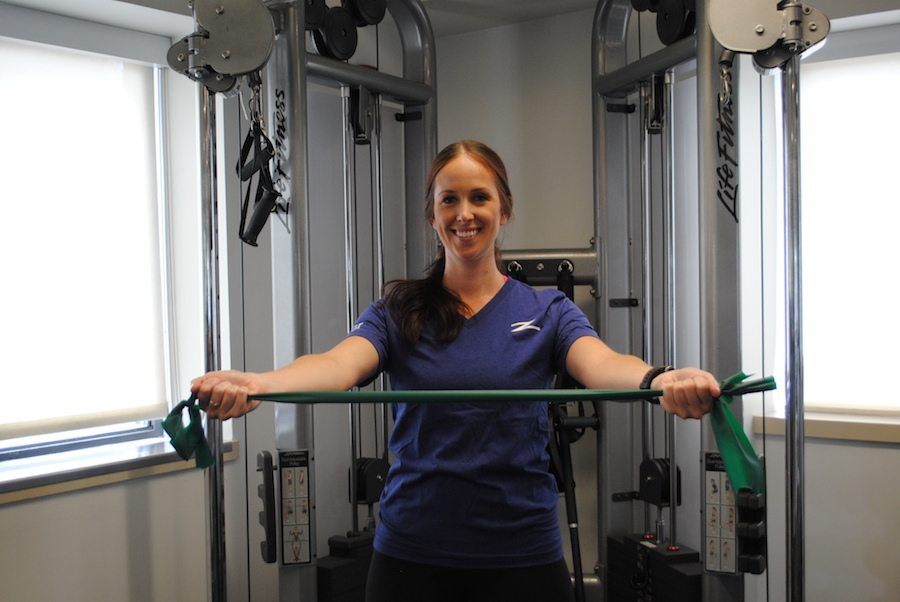
Photograph courtesy Zarett Rehab.

Photograph courtesy Zarett Rehab.
Hold a resistance band by the end. Keeping the arms straight, pull both ends outwards, pinching your shoulder blades together. Return to start.
Levator Scapulae Stretch

Photograph courtesy Zarett Rehab.
Rotate your head 45 degrees to the side, then place one hand on top of your head and gently press your head down until you feel a stretch in your neck and back. Repeat on opposite side.
Like what you’re reading? Stay in touch with Be Well Philly—here’s how:
- Like Be Well Philly on Facebook
- Follow Be Well Philly on Instagram
- Get the Be Well Philly Newsletter
- Follow Be Well Philly on Twitter


